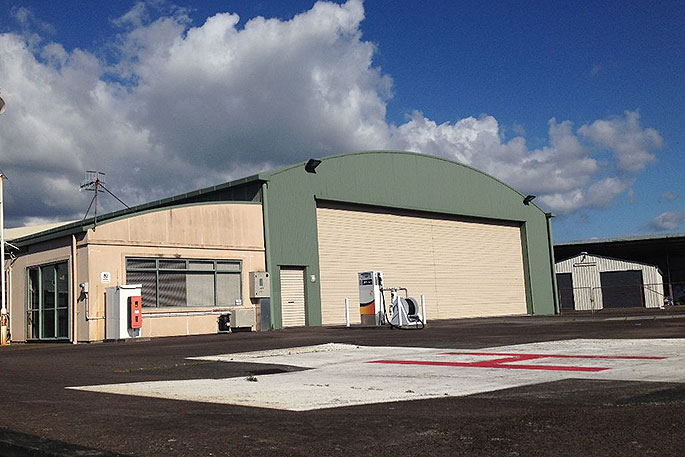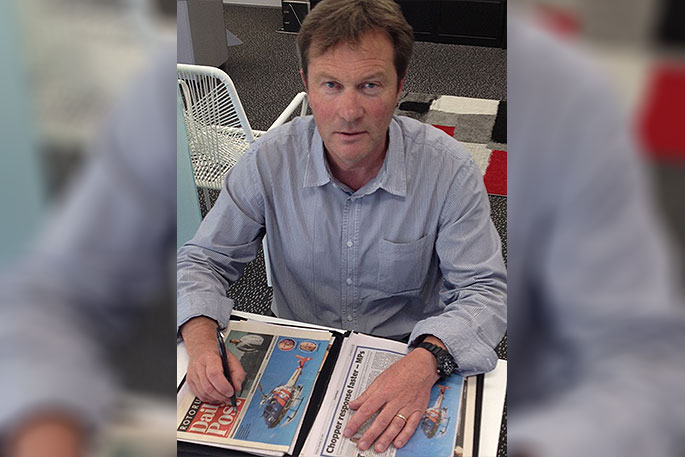A band of Rotorua citizens aiming to restore its helicopter rescue service is now closer to the formation of a trust.
Tacitly called the Rotorua Rescue Helicopter Trust, the group, which met before Christmas, is aggrieved the Rotorua service which began over 22 years ago was culled in a national review of the service.
Of all operations – in the North Island reliant [solely] on public donations and government grants – Rotorua was the only base cut. Adherents for the helicopter's retention feel Rotorua has been the victim, and thus loser, of a greater battle at a political level.
A cull was mooted under the Helen Clark government over 10 years ago, but was subject to review by the National, led by John Key.
Since then, however, the newly installed Labour-government, with adjustments, approved the current recommendation.
The decision to axe Rotorua, despite overtures behind the scenes to retain it as a perfect vehicle for central North Island emergencies, precipitated public unrest. Finally, Philips which has a big say in the central North Island, ambushed Rotorua with an early announcement to confirm Rotorua had been cut from the service. The town seethed.
Before the announcement, Rotorua politicians, which included Deryck Shaw, the chairman of the Lakes DHB, and Rotorua mayor Steve Chadwick, headed a delegation to Wellington.
There, after assurances the Rotorua service would remain, Philips announced the closure.
Quickly, a local group was formed. It comprised the original pilot Ron Taylor, who retired some 12 years ago; lawyer Sandra Kai Fong, who along with Luke Martin had served on the Bay of Plenty Community Trust; Mark Mortimer, for a dozen years involved as senior air crewman with the helicopter service; and local businessman Paul Sumner, who was involved in the set-up 12 years, donating timber and sponsorship for the building; in those early days Mortimer was an associate sponsor.
Todd MacClay, the Rotorua MP, is acting as settlor – a person who can create a trust and who could also be a trustee, though it's unlikely he would take up that second role.
The likely foundation chairman of the trust is Mark Mortimer, who since the Rotorua service was severed has taken a virtual time and motion study of the revised service. The increased helicopter activity in Rotorua at all hours of the night over and since the Christmas period has not gone unnoticed.
But neither he nor Philips – which has twice been contacted for comment by this site – could provide figures or inbound or outbound flights ferrying patients to care to other areas like Taupo, Tauranga or Hamilton. But Mortimer says he has no access to figures, anyway.

Rotorua's helipad which stands adjacent Rotorua Hospital.
Mark Mortimer is at a loss over political rhetoric that suggests that with bigger twin-engined helicopters Rotorua or the wider Bay of Plenty is better serviced with the revision. Besides, he says, the twin-engined choppers, part from Rotorua, Taupo and Gisborne which operated single-engined craft, have been around for some time. Cockpits etc were modernised over craft aged 35-years from Germany from where the twin-engines are purchased or leased.
To underscore Mark Mortimer's point over claims of greater efficiency, the Philips recently reported a pickup from Rotorua. But it had to fly its Tauranga-based craft to Rotorua to pick up an injured man.
On Saturday January 12, the Philips site reported the following: 'The Trustpower TECT Rescue Helicopter was dispatched at 5.30am on Friday 11 January to up lift a patient from Rotorua Hospital. The 49 year old Rotorua man was suffering from a serious cardiac condition and required urgent medical transportation to Waikato Hospital. At 12.45pm the rescue team were once again dispatched this time to a motor cross track approximately 10km south east of Tokoroa.”
The group has already had offers of significance, like a helicopter. In its hangar, for which the locks have recently been changed, apparatus needed in day-to-day, or flight-by-flight operations, are maintained in pristine condition.
This includes night vision goggles (three at $15,000 a time), life packs and transfer stretchers, plus a hoist which is now in use at Gisborne. All up, the gear was raised by the Rotorua community.
While McClay is involved, Mark Mortimer says he has been disappointed at the performance of local politicians.
'I believe these helicopters should be positioned down the spine of the country,” Mortimer says.
'I agree Taupo still needed a service because of what was down there, the mountain and south of that mountain,” Mortimer says.
'But Rotorua definitely needed to stay because of our geographic position backing up to the east, the south and the west. We are geographically central to do that back-up.
'Our goal is to get our service back in Rotorua.”



0 comments
Leave a Comment
You must be logged in to make a comment.